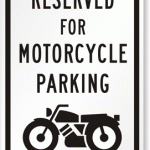Talking distracts pedestrians more than texting on phone
Distracted driving has been ingrained in most drivers’ (and passengers’) minds since the advent of smartphones. But what about distracted walking? A new study, “The effects of mobile phone use on pedestrian crossing behaviour at unsignalized intersections,” out of the University of Belgrade, aims to investigate the influence mobile phone use, including talking, texting and listening to music, has on pedestrians’ making their way across the street.

Image from pennuja.
The researchers compared data from pedestrians who use mobile phones, with those who do not, to predict unsafe types of behavior. The results? Unsurprisingly, those who use phones while crossing the street “behave less safely” than those who don’t. What’s new is that the safety of those pedestrians depends on how they use their phones.
One study found that in the U.S. in 2005, over 250 pedestrians were hospitalized due to injuries incurred while using their phones; by 2010, that figurewas six times higher. Another study, released last year, uncovered more dangers: In that study, those who texted while walking were found to be at higher risk for getting into harm’s way or tripping while crossing the street; it also found that texters took shorter steps and dragged their feet more than non-distracted walkers.
For the study, six researchers directly observed pedestrian behavior, noting how walkers with and without phones behaved at crossings, and also noting gender and age of the pedestrians, as well as whether there were any additional pedestrians with them. Researchers looked specifically for the following: “whether the pedestrian looked at traffic before crossing, whether the pedestrian waited for traffic to stop before crossing, whether the pedestrian looked at traffic while crossing, whether the pedestrian started the crossing at the marked pedestrian crossing and whether the pedestrian finished the crossing at the marked pedestrian crossing.”
Unsurprisingly, at any time, 10-15% of pedestrians use their phones while walking. Plus, pedestrians located in city centers are more likely to use their phones while walking than those in the suburbs, and, they tend to use their phones more often on workdays than on weekends. Peds on phones were found to be less safe than those without phones.
Nothing surprising so far, but the researchers found that the kind of phone use had an impact on safety. Talking, not texting or viewing content on the phone, was the most dangerous behavior, while listening to music had the least impact. Texting or looking at a phone did still impact safety, much research already attests, but not as significantly as speaking did.
Technology, suggest the researchers, could be both the problem and the solution. Smartphones could, for example, be equipped with warnings that let walkers know a pedestrian that a car is approaching or a crossing is coming up. “Would pedestrians notice and listen to the warning in this case?” ask the researchers. “Only in the research on the influence of the existing and new mobile technologies could the users and society obtain the knowledge needed to prevent the traffic accidents of this kind.”
Read the study in full, and check out smartphone safety tips for child pedestrians.
Related Posts
Category: News, Uncategorized

















